It looks like you're using an Ad Blocker.
Please white-list or disable AboveTopSecret.com in your ad-blocking tool.
Thank you.
Some features of ATS will be disabled while you continue to use an ad-blocker.
share:
First off, I used the search function and didn't see this anywhere and mods if this is in the wrong forum please feel free to move it to the
appropriate one.
3,000 Ancient Buddhas Unearthed in China....
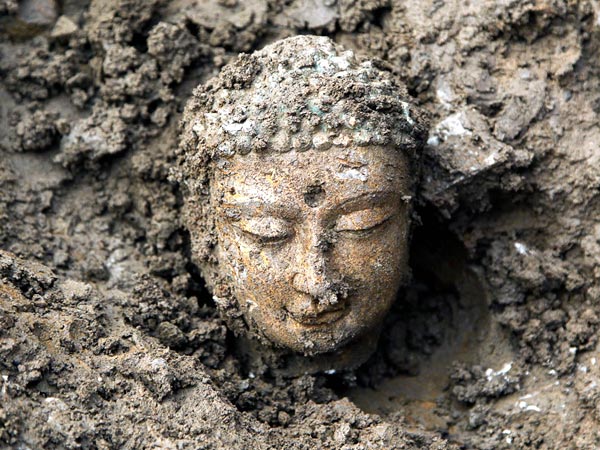
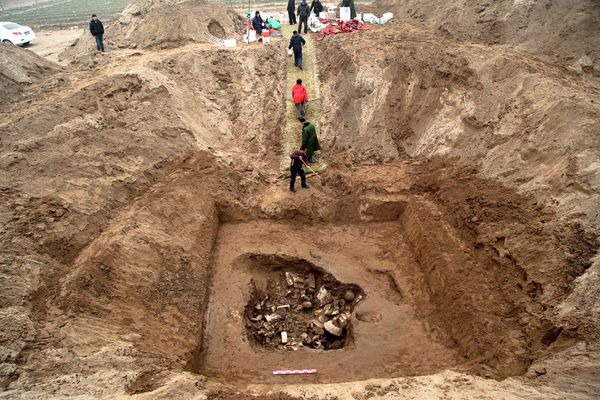
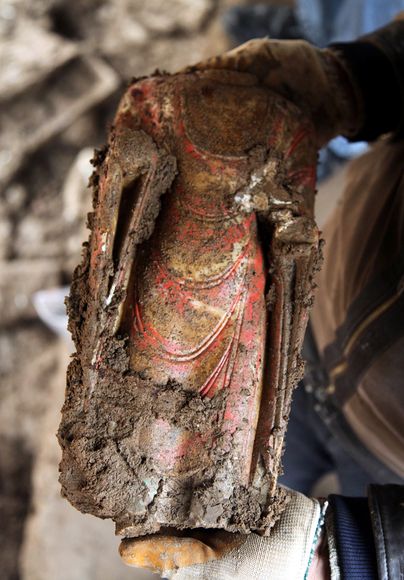
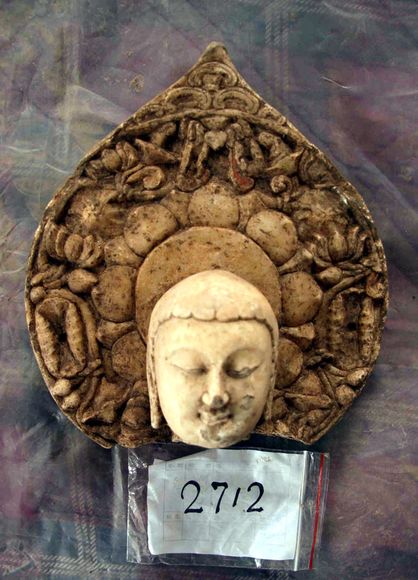
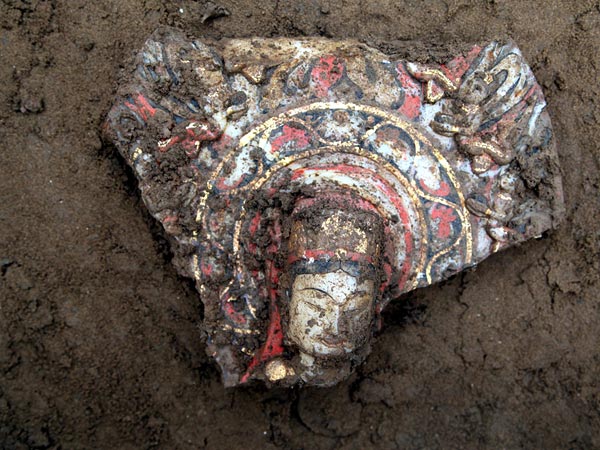
3,000 Ancient Buddhas Unearthed in China....
The discovery is believed to be the largest of its kind since the founding of the People's Republic of China in 1949, an archaeologist with the Chinese Academy of Social Sciences told reporters in late March, according to the Associated Press.
The Buddha statues—most of which are made of white marble and limestone and many of which are broken—could date back to the Eastern Wei and Northern Qi dynasties (A.D. 534 to 577), experts say.
The statues—discovered during a dig outside of Ye, the ancient capital of the Eastern Wei and Northern Qi dynasties—may have been rounded up and buried after the fall of the Northern Qi dynasty by later emperors in an attempt to purge the country of Buddhism.
"It may have been that some of the ruins and broken sculptures from the past were gathered from old temple sites and buried in a pit," said Katherine Tsiang, director of the Center for the Art of East Asia at the University of Chicago.
In some cases, the Buddhist statues may have been buried by the faithful themselves in times of danger.
"In other sites, there are inscriptions that suggest that old damaged sculptures were not just dumped in a pit, but respectfully buried in an orderly way," Tsiang said.
The head of a Buddha statue peeks above the dirt in Handan, China, where archaeologists have reportedly unearthed nearly 3,000 Buddha statues, which could be up to 1,500 years old..Knowing Smile;

On March 20 Chinese archaeologists stand at the edge of a pit where thousands of ancient Buddha statues were unearthed in January. The statues range from about 8 inches (20 centimeters) long to life-size.
While rare, such finds are not unheard of, Tsiang said. In the 1950s, for example, archaeologists found more than 2,000 fragments from broken marble Buddha statues at the site of a temple in Dingxian in China's Hebei Province.
"Many sculptures from these sites are similar in style to those found recently at Ye," Tsiang said. But this "may be the largest find. I don't know of larger examples."
The fifth and sixth centuries were important periods for the spread and development of Buddhism in China, she added.
"We know that Buddhism"—which began in India around 500 B.C.—"was introduced to China during the Han dynasty" several hundred years before the newfound artifacts are believed to have been created, Tsiang said.
"At first, it may have only been practiced by foreigners. ... Gradually it became much more popular after the Han dynasty fell. And by the fifth and sixth centuries, there was quite a lot of trade across the Silk Road into China from Central Asia.
"So [Buddhist] monks from India were coming in, and Chinese monks were traveling and learning. There were also translation projects, so the texts of Buddhism were being translated into Chinese."..Deep in the Past;

A Chinese archaeologist gingerly holds an ancient headless Buddha statue, one of thousands recently uncovered in a pit in northern China.
Such "freestanding" Buddha statues—typically shown wearing monk-style robes like the one shown here—were widely made in northern China from the middle of the fifth century A.D. onward. Before this time, the Buddha was usually shown standing in a group, with pairs of attendants.
The life-size or nearly life-size nature of the freestanding Buddha and the lack of a standard body type or facial expression for the statues have led some scholars to speculate that the sculptures were results of a new understanding of the Buddha in human terms, rather than as a supernatural divinity or immortal....Colorfast

A stone Buddha missing its body is one of nearly 3,000 ancient statues depicting the enlightened prince that were unearthed in northern China earlier this year.
The Buddha's head is surrounded by a halo with a large central lotus-leaf blossom—an important symbol in Buddhism of purity and rebirth.
"The Buddha had a bump on top of his head that represents his extra wisdom," Tsiang said. "In this case that extra protuberance is not very high. It's just shown as a slightly raised part of the skull."
In fifth-century China, Buddhists would often pay to have craftsmen carve a statue of the Buddha, which they would then donate to temples.
"It was a way of doing good deeds, generating merit," Tsiang said. "People who gave gifts to temples were considered deeply deserving of rewards, which could include good health or protection by the Buddha."
Often the statues would include inscriptions wishing a deceased loved one a good rebirth or the attainment of enlightenment...Blooming Halo;

Some of the statues gifted to Buddhist temples by ancient Chinese donors—such as this newfound sculpture of a bodhisattva, or enlightened Buddhist being—were elaborately decorated at great expense.
"People wanted to show their generosity with the use of expensive materials like marble and bronze and expensive pigments and gold," Tsiang said...Bodhisattva;

Statues like this one—of young figure in a cross-legged pose common in Buddhist art—were common in fifth-century China. Such sculptures refer to a formative period in the Buddha's youth, when he had first contemplated the suffering of life and resolved to detach himself from this world while seated in the shade of a bodhi tree.
"This is an image derived from India that appeared in scenes of the life of the Buddha, and it shows the Buddha as a prince before he went in search of enlightenment," Tsiang explained.
The popularity of this "contemplative" pose amongst Buddha statues in fifth-century China may be related to the growing belief at the time that living Buddhist practitioners could also achieve enlightenment, Tsiang said.
"People learned that Buddha himself was a human," she added, "and that it was possible for them to become enlightened through study, cultivation of spirit, and meditation."...Deep Thoughts;
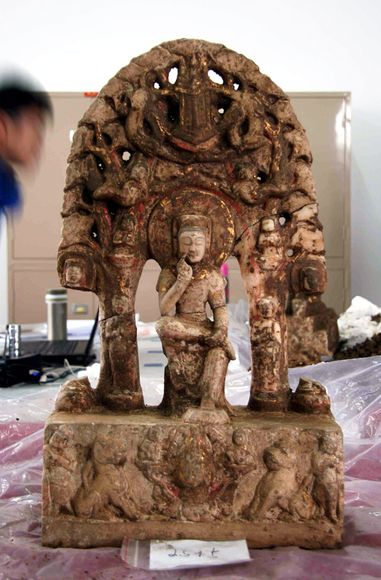
Source
edit on 19-4-2012 by Ericthenewbie because: (no reason given)
They are beautiful! And who knows how many other treasures like this continue undiscovered around the world
SPAM removed by Admin
edit on Apr 19th 2012 by Djarums because: (no reason given)
Absolutly awesome, not the fact they burried them but that they found them.
I am looking forward to see more pictures of them.
I am looking forward to see more pictures of them.
Awesome find s&f for you and the diggers, history is all around us just waiting to be found
reply to post by rudeboyrave
The Buddha's head is surrounded by a halo with a large central lotus-leaf blossom—an important symbol in Buddhism of purity and rebirth. ...does this answer your question?
The Buddha's head is surrounded by a halo with a large central lotus-leaf blossom—an important symbol in Buddhism of purity and rebirth. ...does this answer your question?
neat. It is amazing all the things they found buried around the world so many things are lost until some one fianlly discovers them i love seing all
the things that are found from so many years ago!
Just an observation. These buddas seem slimmer than the others we see around the world.
Does thsat prove obesity is definately only a modern plague?
Does thsat prove obesity is definately only a modern plague?
reply to post by pacifier2012
Source
The Buddha is not fat. All statues portraying the historical Buddha show him as slim as befits a man who ate only enough to satisfy hunger not to be full and spent his life wandering over the countryside. The statues of the "fat Buddha" are actually statues of a Chinese monk named Hotei, who was famous for his generosity and kindness to children. Confusing those images with the Buddha is like confusing Santa Claus with Jesus. Part of the confusion may arise from the fact that Hotei's name in Chinese is Budai.
Buddha advocated a middle way in your approach to life, part of this is to eat until you are no longer hungry - not until you are full. Combining this with a vegetarian diet and a lifestyle which involved walking about giving his discussions or sermons, it is likely that he was fit and slender not fat.
As far as the non-Buddhist view that Buddha was fat, this is probably due to the fact that most people's only contact with Buddha images is Hotei, the fat laughing oriental figure often seen in restaurants, or the fat Buddha seen in Hollywood movies.
Source
reply to post by Ericthenewbie
Ericthenewbie,
Star & Flag! What an absolutely great find! Thank you for sharing this with us!
Ericthenewbie,
Star & Flag! What an absolutely great find! Thank you for sharing this with us!
Originally posted by rudeboyrave
whats with all of the mushrooms in "2712"
They are actually boggles, not mushrooms.
You know as in the saying "the mind boggles".
This is a representation of that.
It's too bad we are not the best of friends with China. I can only imagine all the great stuff scattered throughout the country. China has been a
major area of settlement and trade for thousands of years. The history and artifacts still undiscovered has to be mind blowing!! S&F
lol isnt the happy/fat buddha a Chinese rendition of siddharta guatama? they traditionally seen fat as healthyness and wealth.
Buddha was an Indian prince who abandoned his royalty for the middle path - moderation in everything - humble enlightment
Buddha was an Indian prince who abandoned his royalty for the middle path - moderation in everything - humble enlightment
reply to post by Ericthenewbie
Its always great when the earth shows us something that was valued in the past. It is inspirational, even more so nowadays. One interesting point though, is that the Buddha recommended not to use his physical face but if anything the best image would be the feet. So as not to create a false Icon or god like following. So here we have some feet that may point us back even further.

Its always great when the earth shows us something that was valued in the past. It is inspirational, even more so nowadays. One interesting point though, is that the Buddha recommended not to use his physical face but if anything the best image would be the feet. So as not to create a false Icon or god like following. So here we have some feet that may point us back even further.

Originally posted by pacifier2012
Just an observation. These buddas seem slimmer than the others we see around the world.
Does thsat prove obesity is definately only a modern plague?
The commonly know fat buddha is not a depiction of Guatama Buddha, which most of these statues represent (as far as I could tell from the article).
Rather he is one of the Arhats. Which are something akin to buddhist saints, or other people who have achieved enlightenment and decided to postpone ultimate enlightenment in order to teach humanity.
Budai
edit on 20-4-2012 by fedeykin because: (no reason given)
Me like!
This is such a cool find!
Thank you OP!
I consider it always wonderful when and where we can get a good solid glimpse into the past, especially where it concerns our beautiful past which quite often has been anything but.
So much Buddha! So much awesome.
This is such a cool find!
Thank you OP!
I consider it always wonderful when and where we can get a good solid glimpse into the past, especially where it concerns our beautiful past which quite often has been anything but.
So much Buddha! So much awesome.
new topics
-
12 jurors selected in Trump criminal trial
US Political Madness: 58 minutes ago -
Iran launches Retalliation Strike 4.18.24
World War Three: 1 hours ago -
Israeli Missile Strikes in Iran, Explosions in Syria + Iraq
World War Three: 1 hours ago -
George Knapp AMA on DI
Area 51 and other Facilities: 7 hours ago -
Not Aliens but a Nazi Occult Inspired and then Science Rendered Design.
Aliens and UFOs: 7 hours ago -
Louisiana Lawmakers Seek to Limit Public Access to Government Records
Political Issues: 9 hours ago -
The Tories may be wiped out after the Election - Serves them Right
Regional Politics: 10 hours ago
top topics
-
BREAKING: O’Keefe Media Uncovers who is really running the White House
US Political Madness: 14 hours ago, 25 flags -
George Knapp AMA on DI
Area 51 and other Facilities: 7 hours ago, 20 flags -
Biden--My Uncle Was Eaten By Cannibals
US Political Madness: 15 hours ago, 18 flags -
Israeli Missile Strikes in Iran, Explosions in Syria + Iraq
World War Three: 1 hours ago, 10 flags -
"We're All Hamas" Heard at Columbia University Protests
Social Issues and Civil Unrest: 15 hours ago, 7 flags -
Louisiana Lawmakers Seek to Limit Public Access to Government Records
Political Issues: 9 hours ago, 7 flags -
So I saw about 30 UFOs in formation last night.
Aliens and UFOs: 12 hours ago, 5 flags -
Not Aliens but a Nazi Occult Inspired and then Science Rendered Design.
Aliens and UFOs: 7 hours ago, 4 flags -
Do we live in a simulation similar to The Matrix 1999?
ATS Skunk Works: 13 hours ago, 3 flags -
The Tories may be wiped out after the Election - Serves them Right
Regional Politics: 10 hours ago, 3 flags
active topics
-
Israeli Missile Strikes in Iran, Explosions in Syria + Iraq
World War Three • 30 • : Unknownparadox -
Iran launches Retalliation Strike 4.18.24
World War Three • 9 • : JimmyNeutr0n -
Fossils in Greece Suggest Human Ancestors Evolved in Europe, Not Africa
Origins and Creationism • 59 • : Xtrozero -
Russian intelligence officer: explosions at defense factories in the USA and Wales may be sabotage
Weaponry • 166 • : twistedpuppy -
Max Loughan Boy Genius Or Something More?
Science & Technology • 68 • : dragonridr -
"We're All Hamas" Heard at Columbia University Protests
Social Issues and Civil Unrest • 128 • : 777Vader -
Candidate TRUMP Now Has Crazy Judge JUAN MERCHAN After Him - The Stormy Daniels Hush-Money Case.
Political Conspiracies • 392 • : Zanti Misfit -
12 jurors selected in Trump criminal trial
US Political Madness • 9 • : Vermilion -
MULTIPLE SKYMASTER MESSAGES GOING OUT
World War Three • 38 • : 777Vader -
It has begun... Iran begins attack on Israel, launches tons of drones towards the country
World War Three • 885 • : dragonridr
